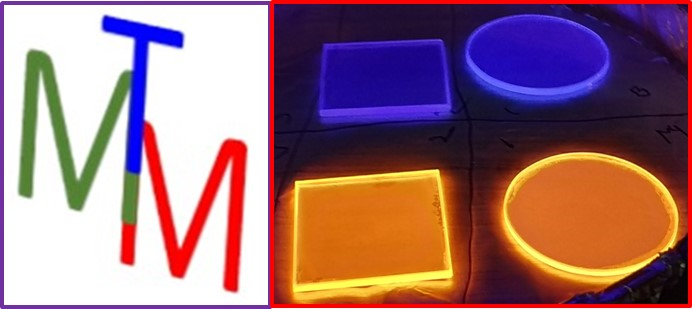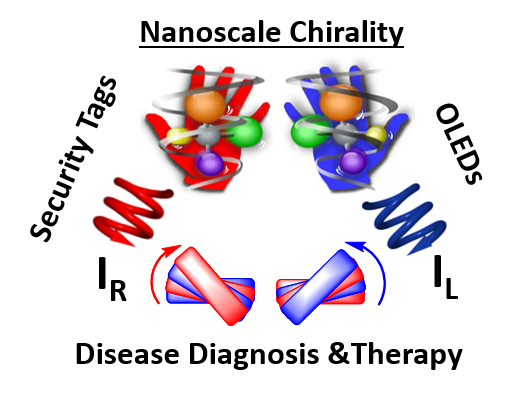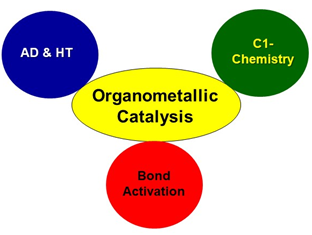Chemistry Research Groups
Research Groups
Prolyl Polypeptides and Peptide Nucleic Acids (Prof K N Ganesh)
Our group is interested in the studying correlation of structure with self-assembling properties of 4(R/S)-(OH/NH2)-substituted prolyl polypeptides and collagen mimetics. Another area of interest is to enhance cell permeability Peptide Nucleic Acid (PNA) through cationic and fluorinated analogues towards potential application as antisense therapeutic agents and modulate their molecular recognition features through novel Janus PNA constructs. The objective is to fundamental understanding of the connections between molecular structures, conformation and self-assembly that dictate their biological activity and morphological features important for developing materials with new properties.

Electrochemistry of Materials (Prof. Vijayamohanan Pillay)
I work on a variety of problems at the interface between Electrochemistry and Materials Chemistry, sometimes using electric filed to make unusual, two-dimensional materials like graphene and phosphorene quantum dots while in some other cases to make hybrid materials for applications ranging from more efficient electrocatalysts for energy storage (e.g.,fuel cells and batteries) to self-assembled mono and multilayers for biosensors and molecular electronics. Electrochemical (voltammetry, impedance spectroscopy) as well as spectroscopic tools are used to characterize these materials and in favorable cases, even in situ techniques could be developed to unravel the mechanism.
Catalysis and Synthesis Group (Gopinath Purushothaman)
Our primary research focus is to develop new synthetic methods using catalysis as the main tool with special focus on visible light photoredox catalysis, transition metal catalysis & asymmetric catalysis. These synthetic methods will later be used for applications in total synthesis of natural products, drugs & other bioactive compounds.

Biomimetic Systems and Bioinorganic Chemistry group (Pankaj Kumar Koli)
Our group mainly focus on biomimetic systems and small molecule activation (O2, NO, CO, CO, and H2S, etc.) in the field of bioinorganic chemistry. In addition, we also focus on bio-sensing, catalysis and insight into the mechanistic pathways of various enzymatic reactions.

Computational and Quantum Chemistry (Raghunath O Ramabhadran)
Our group primarily works in the area of computational and quantum chemistry. We eagerly work towards new developments in application of computational tools/protocols in organic/bio-organic, inorganic, and physical chemistry. As an auxiliary area, we are also interested in scientific pedagogy.

Banerjee Research Group (Shibdas Banerjee)
We work on clinical mass spectrometry imaging for cancer diagnosis and disease biomarker discovery. Our laboratory also focuses on methodology developments using ambient ionization mass spectrometry to explore natural product discovery, microdroplet chemistry, catalysis and mechanistic organic chemistry.

Protein Nanomechanics lab (Soumit Sankar Mandal)
The main focus of our research group is to investigate the correlation between the structure and function of multidomian proteins using Spectroscopic and Single Molecule Optical tweezers technique.

Main Group Chemistry & Catalytics (Sudipta Roy)
Our group is interested in the syntheses of carbene stabilized zero-valent heterodiatomic compounds with main group elements and/or mixed transition metal/main group elements and studying their physical and catalytic properties for the syntheses of biologically relevant small organic molecules

Energy Storage Materials (Vanchiappan Aravindan)
We perform research activity in the Materials Chemistry, specifically energy storage materials for batteries and supercapacitors. Our prime aspect of work is to realize the high energy and power capability in a single device by integrating rechargeable batteries and supercapacitors. Recycling spent batteries and bio-waste derived material towards charge storage devices to keep our environment clean and tidy is another benchmark of our research.

Ash Lab (Ashwani Sharma)
Ash Lab works in the area of nucleic acid aptamers, which are single stranded DNA or RNA oligonucleotides having high affinity and specificity to their target. Aptamer binding to its target is utilized in designing new biosensing platforms for disease detection and diagnostics. In addition, the lab also focuses on construction of DNA/RNA based nanoparticles decorated with aptamers and oligotherapeutics such as siRNA for the targeted drug delivery to different cancers.

Single-Molecular Nano-Magnets (Arun Kumar Bar)
The Bar research group mainly focuses on the cutting-edge research to address the problems, ranging from the very fundamental to applications, of molecular and supramolecular magnetic materials. Multi-pronged chemical strategies are employed to improve the magnetic properties in view of the applications in modern technologies. The research group designs and synthesizes smart organic/inorganic ligands judiciously to achieve metal complexes enforcing desired chemical functionality and geometric topology around the metal centre(s).

Multifunctional Materials Laboratory (Janardan Kundu)
Our group focuses on multifunctional materials that target applications in energy and environment. Metallic and semiconducting particles (bulk phase, nano phase, thin films) constitute the major focus in our group wherein wet chemistry synthesis and device techniques are integral part of our daily research efforts. A physical chemistry approach to materials science, nanotechnology, and optoelectronics is practised in our group. We invite enthusiastic students to join our group to work on ‘Materials that Matter’.

Chiral Bionanomaterials (Jatish Kumar)
Our research group will focus on the design and synthesis of novel organic, inorganic and hybrid chiral nanomaterials that can find suitable applications in the field of optoelectronics, as security tags and in disease diagnosis and therapy. In addition to the applications mentioned above, one of the major objectives of the group will be to understand the basic mechanism of chirality in nano and biomaterials.

Excited state and multiscale computational chemistry group (Padmabati Mondal)
Our group focuses on development and application of multiscale computational tools to connect real life phenomena with basic theory. This includes 1. Quantum mechanical study of excited state processes of organometallic complexes and chromophores 2. Theoretical study of biological enzyme catalysis reactions using QM/MM methods 3. Molecular dynamics simulation study of biomolecules leading to computational drug design

Organometallics & Sustainable Catalysis (Ekambaram Balaraman)
At the present scenario, the chemical industry is a key constituent of the Indian economy, accounting for about 1.38% of the nation’s GDP. Catalytic processes are preliminarily involved in the synthesis of 80% of all industrially produced chemicals. In view of this, design and development of innovative new catalytic systems has clear, direct and long-term benefits to the chemical manufacturing sector and to the broader knowledge-based economy. Among the leading approaches to develop new catalytic systems, rational design is next to combinatorial and high-throughput experimentations. Dr. Ekambaram Balaraman’s research interest mainly includes mechanistic approach to design and development of novel catalysts/catalytic materials for fundamentally important organic transformations which is of industrial importance. In particular dehydrogenation of feedstock chemicals (hydrogen generation), C-1 chemistry (includes CO2 to value added chemicals and polymer), and development of novel donors in Ziegler-Natta polymerization catalysis.



